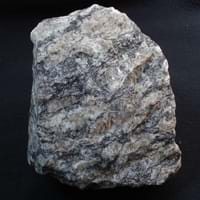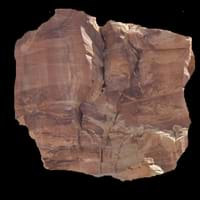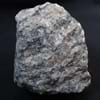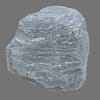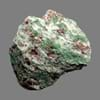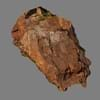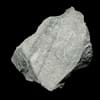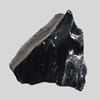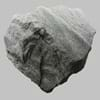Definition
Gneiss is a common and widely distributed type of rock formed by high-grade regional metamorphic processes from pre-existing formations that were originally either igneous or sedimentary rocks
Sandstone is defined as a rock which is composed of sand-sized grains of various minerals mostly of uniform size and often are smooth and rounded
Discoverer
Unknown
Unknown
Etymology
From the Middle High German verb gneist (to spark; so called because the rock glitters)
From its composition, sand and stone
Class
Metamorphic Rocks
Sedimentary Rocks
Sub-Class
Durable Rock, Hard Rock
Durable Rock, Hard Rock
Group
Not Applicable
Not Applicable
Other Categories
Coarse Grained Rock, Medium Grained Rock, Opaque Rock
Coarse Grained Rock, Fine Grained Rock, Opaque Rock
Texture
Banded, Foliated, Platy
Clastic, Granular, Rough
Color
Black, Brown, Pink, Red, White
Beige, Black, Brown, Colourless, Cream, Dark Brown, Green, Grey, Light Green, Light to Dark Grey, Pink, Red, White, Yellow
Durability
Durable
Durable
Scratch Resistant
Yes
Yes
Appearance
Foliated
Rough
Interior Uses
Countertops, Decorative Aggregates, Flooring, Interior Decoration
Countertops, Decorative Aggregates, Interior Decoration
Exterior Uses
As Building Stone, As Facing Stone, Garden Decoration, Paving Stone
As Building Stone, As Facing Stone, Office Buildings
Other Architectural Uses
Curbing
Curbing
Construction Industry
As Dimension Stone
Cement Manufacture, Construction Aggregate, for Road Aggregate, Production of Glass and Ceramics, Raw material for the manufacture of mortar
Medical Industry
Not Yet Used
Not Yet Used
Antiquity Uses
Artifacts
Artifacts, Monuments, Sculpture
Commercial Uses
Cemetery Markers, Jewelry, Tombstones, Used in aquariums
An Oil and Gas Reservoir, In aquifers, Petroleum reservoirs, Soil Conditioner, Source of Magnesia (MgO), Tombstones, Used in aquariums
Types
Augen Gneiss, Henderson Gneiss, Lewisian Gneiss, Archean and Proterozoic Gneiss.
Grey Sandstones, Crystallized Sandstones, Hard Sandstones , Carbonate Cemented Sandstones and Ganister
Features
Generally rough to touch, Is one of the oldest rock
Available in Lots of Colors and Patterns, Generally rough to touch, Very fine grained rock
Archaeological Significance
Famous Monuments
Konark Sun Temple in India, Washington Monument, US
Abu Simbel in Egypt, Agia Sophia in Istanbul, Turkey, Angkor Wat in Cambodia, Buland Darwaza in Agra, India, Chhatrapati Shivaji Terminus in Maharashtra, India, Dom in Berlin, Great Sphinx at Giza, Egypt, Hawa Mahal in Jaipur, India, Humayun's Tomb in Delhi, India, India Gate in Delhi, India, Jama Masjid in Delhi, India, Khajuraho Temples, India, Leh Palace in Leh, India, Lotus Temple in New Delhi, India, Luxor Temple in Egypt, Machu Picchu in Peru, Neuschwanstein in Bavaria, Petra in Jordan, Qutb Minar in India, Red Fort in Delhi, India, Sanchi Stupa in India
Sculpture
Not Yet Used
Used
Famous Sculptures
Not Applicable
Ajanta Caves in Maharashtra, India, Elephanta Caves in Maharashtra, India, Mount Rushmore National Memorial in South Dakota, US
Pictographs
Not Used
Not Used
Petroglyphs
Not Used
Not Used
Figurines
Not Yet Used
Used
Formation
Gneiss is a high grade metamorphic rock i.e. it has been subjected to higher temperatures and pressures than schist. It is formed by the metamorphosis of Gneiss forms from volcanic rock, shale or granitie.
Sandstone is a sedimentary rock which forms from cemented sand-sized clasts. It forms when sand layers are buried under sediments of sand.
Mineral Content
Biotite, Chlorite, Feldspar, Garnet, Graphite, Hornblade, Micas, Muscovite or Illite, Quartz, Quartzite, Silica, Zircon
Calcite, Clay, Clay Minerals, Feldspar, Micas, Quartz
Compound Content
Aluminium Oxide, NaCl, CaO, Iron(III) Oxide, FeO, Potassium Oxide, Magnesium Carbonate, MgO, MnO, Phosphorus Pentoxide, Silicon Dioxide, Titanium Dioxide
Aluminium Oxide, CaO, Iron(III) Oxide, Potassium Oxide, MgO, Sodium Oxide, Silicon Dioxide
Types of Metamorphism
Impact Metamorphism
Not Applicable
Types of Weathering
Biological Weathering, Mechanical Weathering
Biological Weathering, Chemical Weathering, Mechanical Weathering
Types of Erosion
Chemical Erosion, Coastal Erosion, Sea Erosion
Chemical Erosion, Coastal Erosion, Glacier Erosion, Sea Erosion, Water Erosion, Wind Erosion
Grain Size
Medium to Coarse Grained
Coarse or Fine
Fracture
Irregular
Conchoidal
Porosity
Very Less Porous
Highly Porous
Specific Gravity
2.5-2.7
2.2-2.8
Transparency
Translucent to Opaque
Opaque
Density
2.6-2.9 g/cm3
2.2-2.8 g/cm3
Specific Heat Capacity
Not Available
Resistance
Heat Resistant, Pressure Resistant, Scratch Resistant, Wear Resistant
Heat Resistant, Impact Resistant, Pressure Resistant
Deposits in Eastern Continents
Asia
China, India, Iran, Iraq, Kazakhstan, Kyrgyzstan, Mongolia, Russia
China, India, Kazakhstan, Mongolia, Russia, Thailand, Uzbekistan
Africa
Cameroon, Ethiopia, Ghana, Kenya, Madagascar, Morocco, Mozambique, Namibia, Nigeria, Tanzania, Togo
Namibia, Nigeria, South Africa
Europe
Albania, Austria, Bosnia and Herzegovina, Finland, France, Georgia, Germany, Hungary, Italy, Kosovo, Monaco, Norway, Poland, Romania, Serbia, Slovakia, Slovenia, Switzerland, Ukraine, United Kingdom
Austria, Denmark, Germany, Great Britain, Netherlands, Norway, Poland, Sweden, Switzerland, United Kingdom
Others
Not Yet Found
Greenland
Deposits in Western Continents
North America
Canada, Costa Rica, Cuba, Mexico, Panama, USA
Canada, USA
South America
Argentina, Bolivia, Brazil, Chile, Colombia, Ecuador, Peru, Venezuela
Brazil
Deposits in Oceania Continent
Australia
New South Wales, New Zealand, Queensland, Victoria
New South Wales, New Zealand
All about Gneiss and Sandstone Properties
Know all about Gneiss and Sandstone properties here. All properties of rocks are important as they define the type of rock and its application. Gneiss belongs to Metamorphic Rocks while Sandstone belongs to Sedimentary Rocks.Texture of Gneiss is Banded, Foliated, Platy whereas that of Sandstone is Clastic, Granular, Rough. Gneiss appears Foliated and Sandstone appears Rough. The luster of Gneiss and Sandstone is dull. Gneiss is available in black, brown, pink, red, white colors whereas Sandstone is available in beige, black, brown, colourless, cream, dark brown, green, grey, light green, light to dark grey, pink, red, white, yellow colors. The commercial uses of Gneiss are cemetery markers, jewelry, tombstones, used in aquariums and that of Sandstone are an oil and gas reservoir, in aquifers, petroleum reservoirs, soil conditioner, source of magnesia (mgo), tombstones, used in aquariums.
